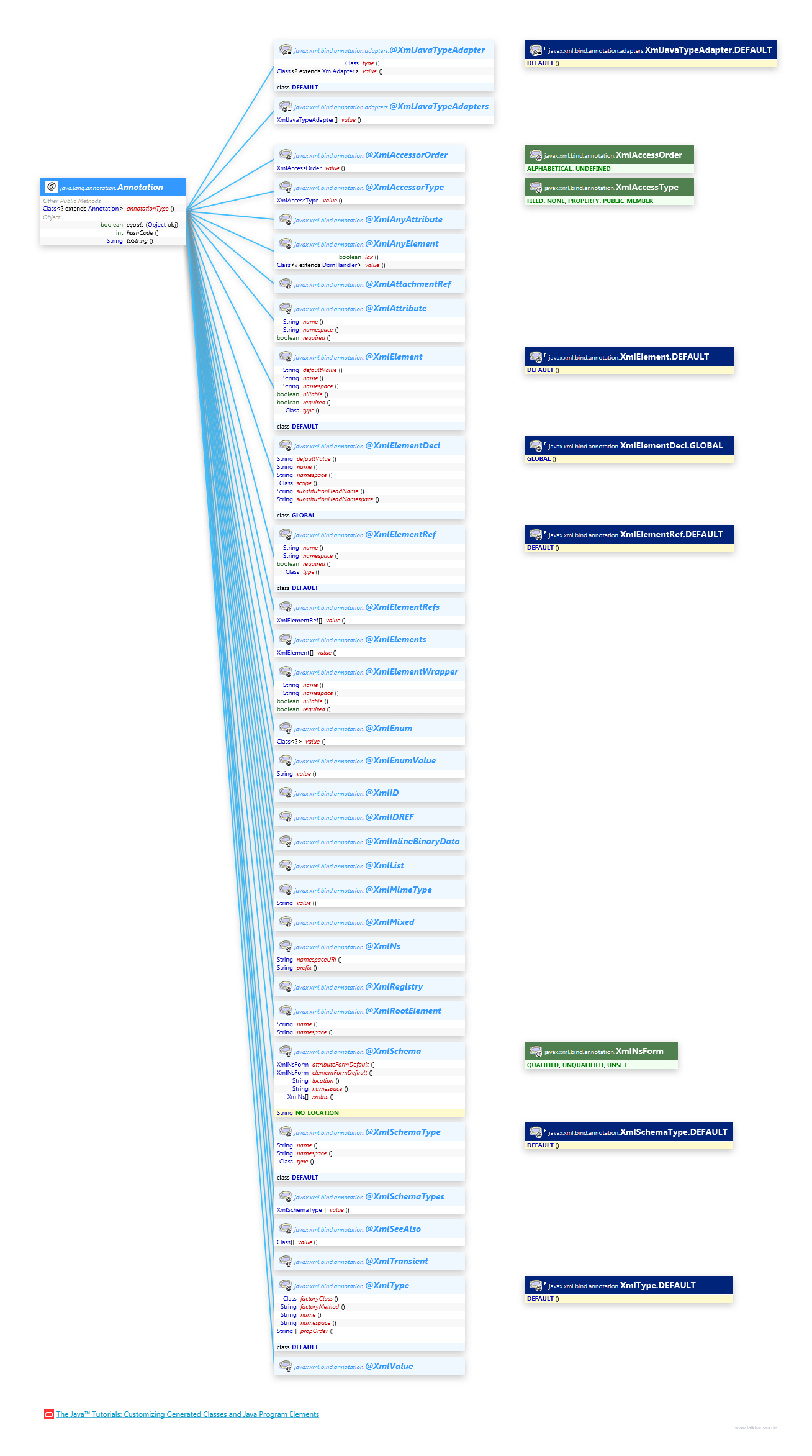

In my case, it attempted the binding on both the entries field and the getEntries() field. Turns out that JAXB default binding access type, XmlAccessType.PUBLIC_MEMBER, will attempt to bind all public fields, annotated fields and properties.


Here's my POJO codes: class EntryMappings List entries Note: There is a new version for this artifact New Version 2.4.0-b180830. By default, JAXB serializes public fields and properties. JAXB provides an API and tools that automate the mapping between XML documents and Java objects. static XmlAccessType, FIELD Every non static, non transient field in a. JBossWS implements Jakarta XML Web Services 2.3, which users can reference for any vendor-agnostic web service usage need. Used by XmlAccessorType to control serialization of fields or properties. This problem is related to the following location: XmlAccessorType sets default field and property serializability. Jakarta XML Web Services defines the mapping between WSDL and Java, as well as the classes to be used for accessing web services and publishing them. Import .jaxb.Yesterday, while attempting to convert a XML string into a POJO, I encountered this error: : .v2.runtime.IllegalAnnotationsException: 1 counts of IllegalAnnotationExceptionsĬlass has two properties of the same name "entries" import import .XmlAccessType import .XmlAccessorType import. Controls the default ordering of properties and fields mapped to XML elements. I've also conducted an extensive search for someone else's solution on Stack Overflow, various blogs, and issues reported against Jackson and Spring-mvc. XmlAccessorType ( value AccessType.PUBLICMEMBER ). To try and solve this, I've tried using both Jackson and JAXB annotations. XmlAccessorType annotation can be used with the following program elements.

This is the simplest mode of unmarshalling. Controls whether fields or Javabean properties are serialized by default. I will also discuss the impact of XmlAccessorType on how. Since: JAXB2.0 See Also: XmlAccessorType Enum Constant Summary Enum Constants Enum Constant and Description FIELD Every non static, non transient field in a JAXB-bound class will be automatically bound to XML, unless annotated by XmlTransient. In this post I'll discuss how this can be done using XmlTransient or XmlAccessorType (XmlAccessType.NONE) and when each option is appropriate. This is a direct extension of ObjectMapper and can be used as a replacement, with the exact same API we’re already used to. This means that sometimes you need to explicitly exclude a field/property.
#Xmlaccessortype how to#
Note that the POJO should be annotated with XmlRootElement annotation. In this post I will demonstrate how to use the propOrder property on the XmlType annotation to control the ordering of XML elements. Used by XmlAccessorType to control serialization of fields or properties. JAXB (JSR-222) is configuration by exception, meaning that there is a default mapping applied to domain objects. However, you can control this behaviour using the XmlAccessorType annotation at. Marshalling a single instance correctly looks like this: We can create an Unmarshaller instance using createUnmarshaller () method and then use the unmarshal () method to perform the unmarshalling. By default, JAXB will serialize all public fields and properties of a bean. I have a Spring-MVC that uses generic names rather than the names I have configured with or I want XML to look like this: There are multiple solutions but basicly if you annotate on variable declaration then you need XmlAccessorType (XmlAccessType.FIELD), but if you prefer to annotate either a get- or set-method then you don't.


 0 kommentar(er)
0 kommentar(er)
